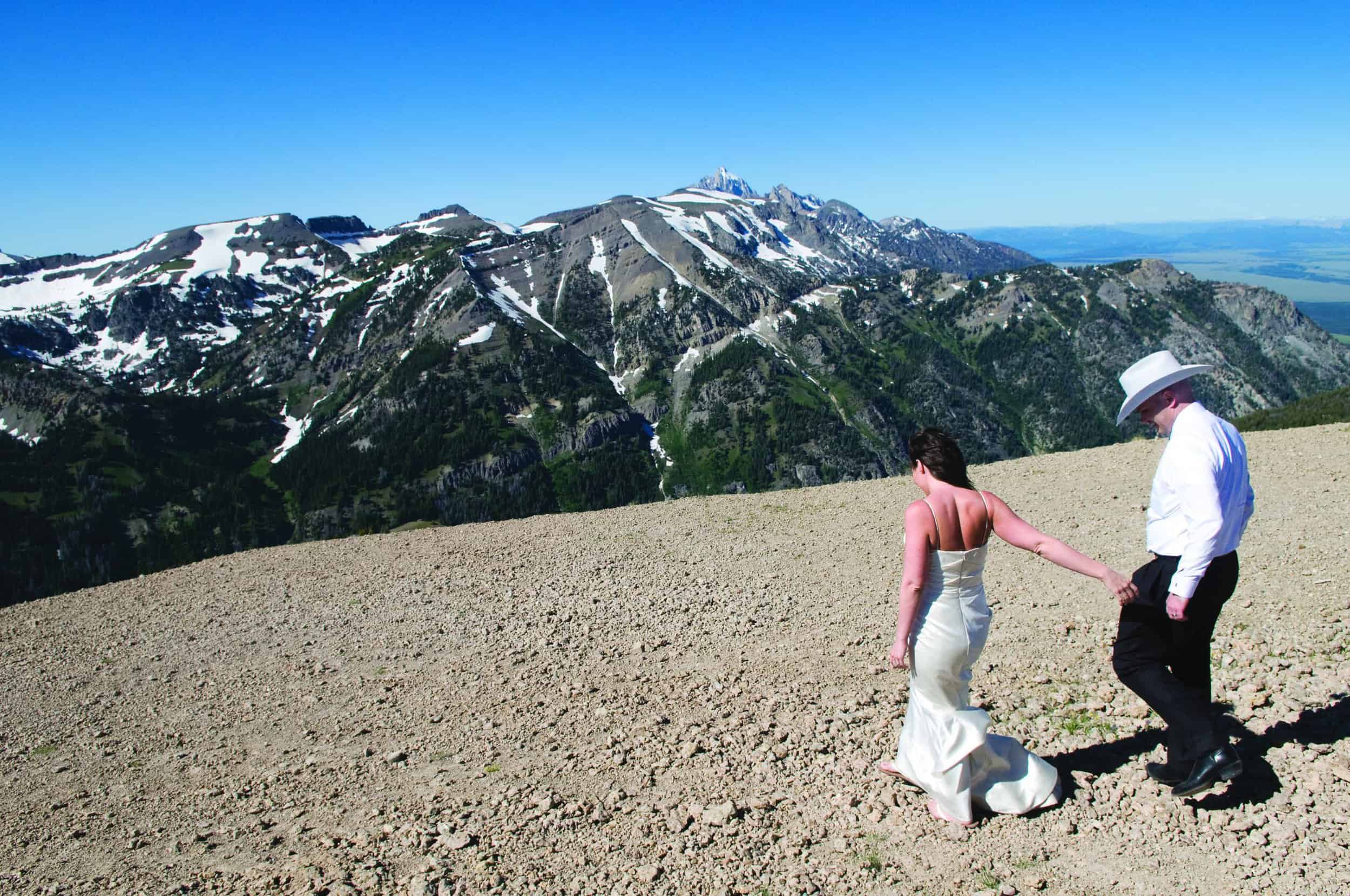Read The
Current Issue
Top of the World
// By Brigid Mander
In 1966, the Jackson Hole tram opened up a new world for skiers in North America, swiftly carrying them up more than 4,000 feet from the valley floor to 10,450 feet—an elevation well into the high alpine of the Teton Range. Today, it’s not just snow lovers who get a ride to the “top of the world.”
Summer tram riders depart a warm, verdant valley and, 12 minutes later, disembark into a rocky, chilly moonscape where harsh weather and the altitude keep wildflowers from growing to be much bigger than the size of a dime. While you might be tempted to make a beeline for cozy Corbet’s Cabin, the highest, and only, mountain hut in the Tetons, and its fresh-made waffles, don’t. A tram ride isn’t complete without a short hike—and we really mean short, it’s about 50 feet in distance and a 30-foot vertical climb from the tram dock—to a rocky, windswept outcrop known as the “Top of the World.”
Of course, this spot is not actually the top of the world—it’s not even the highest point in the Tetons; the summit of the Grand Teton is more than 3,000 feet higher—but it feels like it. Here you have 360-degree views that, on clear days, stretch into three states (Wyoming, Idaho, and Montana) and include almost one dozen different mountain ranges, from the Tetons to the Gros Ventres, the Lost River Range, the Big Hole Mountains, the Absarokas, the Wind River Range, and the Snake River Range, among others. You’ll also see, to the east, the Snake River and almost the entirety of the valley that is Jackson Hole. To the west are the orderly agricultural lands of Teton Valley. It’s worth dropping a quarter into the mounted binocular set here so you can zoom in on the views. Point it at the Grand Teton’s summit and you might even see climbers. And then go into Corbet’s Cabin and enjoy a waffle. JH





